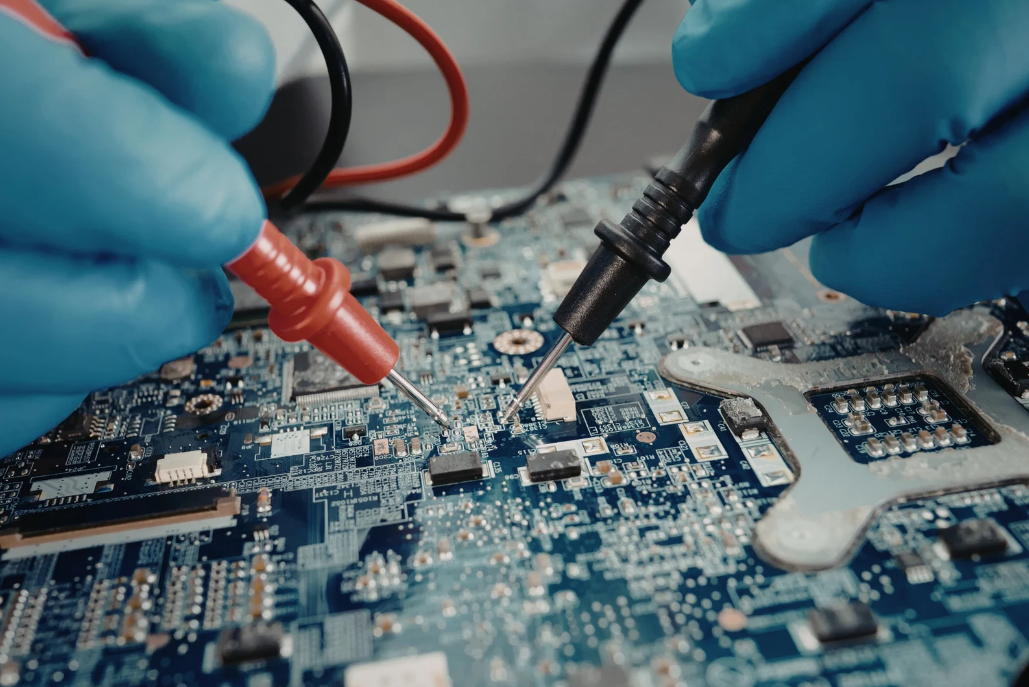Basic Principles of Piezoelectricity
Piezoelectricity is a unique property of certain materials that allows them to generate an electric charge when subjected to mechanical stress. This phenomenon is known as the piezoelectric effect. When these materials are compressed, twisted, or otherwise deformed, they produce a voltage that can be measured and used in various applications.
Materials Used in Piezoelectric Transducers
Several materials exhibit piezoelectric properties, including natural crystals like quartz and synthetic materials such as barium titanate and lead zirconate titanate. These materials are chosen based on their ability to produce a consistent and measurable electric charge under stress.
How Piezoelectric Transducers Work
A piezoelectric transducer converts physical pressures like force or acceleration into an electric charge. When mechanical stress is applied to the piezoelectric material, it generates a voltage proportional to the stress. This voltage can then be measured and analyzed for various applications, from industrial sensors to medical devices.
Piezoelectric transducers are highly sensitive and can detect even the smallest changes in pressure or force, making them invaluable in many fields.

Types of Piezoelectric Transducers
Piezoelectric Sensors
Piezoelectric sensors are used to measure changes in pressure, acceleration, temperature, strain, or force by converting them to an electrical charge. These sensors are highly sensitive and can detect even the smallest changes in the environment. They are commonly used in accelerometers and microphones.
Piezoelectric Actuators
Piezoelectric actuators convert electrical energy into mechanical movement. They are used in applications requiring precise control of small movements, such as in inkjet printers and precision machining tools. These actuators are known for their high responsiveness and accuracy.
Piezoelectric Generators
Piezoelectric generators produce electrical energy from mechanical stress. They are often used in energy harvesting applications, where they can convert vibrations or other mechanical forces into usable electrical power. This makes them ideal for powering small, low-energy devices.
Though there are several piezoelectric materials, polyvinylidene fluoride (PVDF), a polymer-based piezoelectric material, has attracted researchers due to its unique properties.
Applications in Industrial Settings
Vibration Monitoring
Piezoelectric sensors are versatile tools for the measurement of various processes. They are used for quality assurance, process control, and for monitoring vibrations in machinery. This helps in predicting failures and reducing downtime.
Ultrasonic Welding
In ultrasonic welding, piezoelectric transducers generate high-frequency vibrations. These vibrations create heat through friction, which melts the materials and bonds them together. This method is fast and efficient, making it ideal for industrial applications.
Industrial Automation
Piezoelectric transducers play a crucial role in industrial automation. They are used in various automated systems to ensure precision and efficiency. For example, they can be found in robotic arms and automated inspection systems.
Piezoelectric transducers are essential in modern industrial settings, providing reliable and efficient solutions for various applications.
Medical Applications of Piezoelectric Transducers
Piezoelectric materials are used in various medical devices, including ultrasound imaging devices, drug delivery systems, and diagnostic sensors. These materials are essential in transforming mechanical energy into electrical signals and vice versa, making them highly valuable in the medical field.
Ultrasound Imaging
Piezoelectric transducers play a crucial role in ultrasound imaging. They convert electrical signals into sound waves and then back into electrical signals, creating detailed images of the inside of the body. This technology is vital for monitoring pregnancies and diagnosing various conditions.
Medical Implants
In medical implants, piezoelectric materials are used to generate electrical signals from the body’s movements. This can help power devices like pacemakers or other implants that need a reliable energy source. The ability to harness energy from the body reduces the need for external power sources.
Diagnostic Equipment
Piezoelectric transducers are also found in diagnostic equipment, where they help detect and measure various physiological parameters. For example, they are used in devices that monitor blood pressure, heart rate, and other vital signs. The accuracy and reliability of these transducers make them indispensable in medical diagnostics.
Consumer Electronics and Everyday Uses
Microphones and Speakers
Piezoelectric transducers are widely used in microphones and speakers. These devices convert sound waves into electrical signals and vice versa. Piezoelectric materials are fascinating substances that have the ability to generate an electric charge in response to applied mechanical stress. This makes them ideal for capturing and producing sound.
Electronic Lighters
In electronic lighters, a piezoelectric crystal generates a spark when mechanical pressure is applied. This spark ignites the gas, creating a flame. The reliability and simplicity of this mechanism make piezoelectric lighters a popular choice.
Touch Sensors
Touch sensors in various devices, such as smartphones and tablets, often use piezoelectric materials. When you touch the screen, the mechanical stress is converted into an electrical signal, allowing the device to detect and respond to your touch.
The ability of piezoelectric materials to convert mechanical stress into electrical energy and vice versa enables their use in a wide range of applications. From ultrasonic transducers to actuators and sensors, these discs offer unique properties that contribute to the advancement of electronic components and systems.
Challenges and Limitations
Sensitivity Issues
Piezoelectric transducers can be very sensitive to changes in their environment. This sensitivity can sometimes be a problem because it might pick up unwanted signals or noise. For example, in a factory setting, vibrations from nearby machines can interfere with the transducer’s readings.
Material Degradation
The materials used in piezoelectric transducers, like certain inorganic piezoelectric materials, can degrade over time. This degradation can make the transducers less effective. They might become rigid and brittle, which can lead to cracks or breaks, reducing their lifespan.
High Impedance
Piezoelectric transducers often have high impedance, which can make it difficult to get accurate readings. This high impedance can cause issues when trying to measure small signals, as the transducer might not respond well. Special equipment is often needed to handle this high impedance, which can add to the cost and complexity of using these devices.
Despite these challenges, piezoelectric transducers remain a valuable tool in many applications. Ongoing research and development aim to address these limitations and improve their performance.
Future Trends and Innovations
Advancements in Materials
The future of piezoelectric transducers is bright, especially with new materials being developed. These materials promise better efficiency and durability. Researchers are exploring composites and polymers that can offer enhanced performance. This could lead to more reliable and long-lasting devices.
Integration with IoT
Piezoelectric transducers are set to play a crucial role in the Internet of Things (IoT). They can be used in smart homes, wearable devices, and industrial automation. The ability to harvest energy from the environment makes them ideal for IoT applications. Imagine a world where your devices power themselves using ambient energy!
Emerging Applications
New applications for piezoelectric transducers are constantly being discovered. From energy harvesters in remote locations to advanced medical devices, the possibilities are endless. These innovations are not only making our lives easier but also contributing to sustainable development.
The future of piezoelectric transducers is not just about improving existing technologies but also about discovering new ways to use them. The potential is limitless, and the journey has just begun.
In Summary
Piezoelectric transducers are fascinating devices that turn mechanical energy into electrical energy and vice versa. They are used in many everyday items, from microphones to medical equipment. Understanding how they work helps us appreciate the technology around us. These transducers are not just important for today’s gadgets but also for future innovations. As we continue to explore their potential, we can expect even more exciting applications to emerge. In short, piezoelectric transducers play a crucial role in both current and future technologies, making our lives easier and more efficient.
Frequently Asked Questions
What is a piezoelectric transducer?
A piezoelectric transducer is a device that converts mechanical stress into electrical energy using piezoelectric materials.
How do piezoelectric transducers work?
They work by generating an electric charge when mechanical pressure is applied to piezoelectric materials like quartz or ceramics.
What materials are commonly used in piezoelectric transducers?
Common materials include quartz, lead zirconate titanate (PZT), and barium titanate.
Where are piezoelectric transducers used?
They are used in various applications such as medical ultrasound imaging, industrial sensors, and consumer electronics like microphones.
What are the limitations of piezoelectric transducers?
Some limitations include sensitivity issues, material degradation over time, and high impedance.
What are the future trends in piezoelectric transducer technology?
Future trends include advancements in materials, integration with the Internet of Things (IoT), and new emerging applications.



